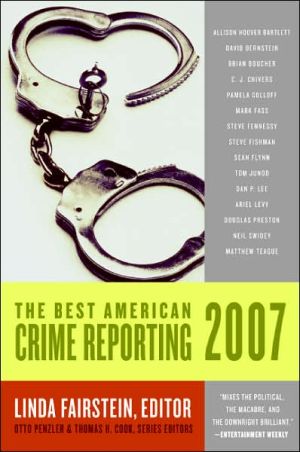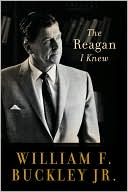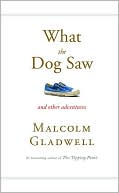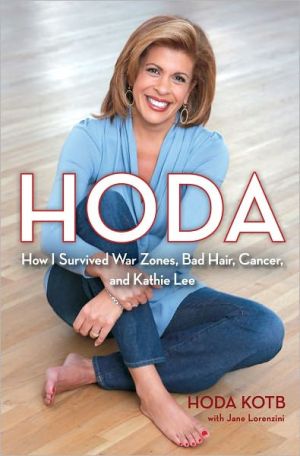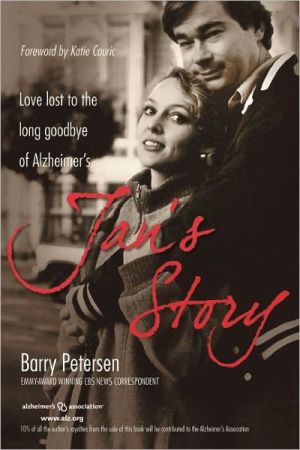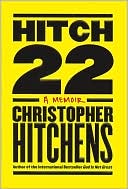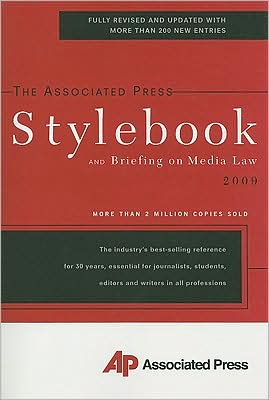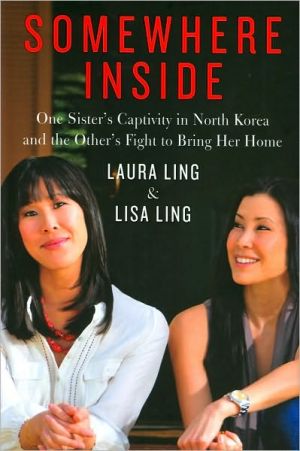The Best American Crime Reporting 2007
Thieves, liars, killers, and conspirators—it's a criminal world out there, and someone has got to write about it. An eclectic collection of the year's best reportage, The Best American Crime Reporting 2007 brings together the murderers and muscle men, the masterminds, and the mysteries and missteps that make for brilliant stories, told by the aces of the true crime genre. This latest addition to the highly acclaimed series features guest editor Linda Fairstein, the bestselling crime novelist...
Search in google:
Thieves, liars, killers, and conspirators—it's a criminal world out there, and someone has got to write about it. An eclectic collection of the year's best reportage, The Best American Crime Reporting 2007 brings together the murderers and muscle men, the masterminds, and the mysteries and missteps that make for brilliant stories, told by the aces of the true crime genre. This latest addition to the highly acclaimed series features guest editor Linda Fairstein, the bestselling crime novelist and former chief prosecutor of the Manhattan District Attorney's Office's pioneering Special Victims' Unit. Publishers Weekly Fans of crime reporting will devour this diverse collection, featuring 15 of the year's best crime stories, written by noted journalists such as Tom Junod (Esquire), Sean Flynn (GQ) and Steve Fishman (New York). Articles (and the crimes they detail) vary widely, one of the book's chief strengths; covering the darkest, most unspeakable crimes is not one of the entry qualifications (though they're certainly represented). One of the brightest pieces, by the Boston Globe Magazine's Neil Swidey, covers the astonishing embezzlement of nearly $9 million by a construction company temp. Several articles examine the possibility of reformation and redemption: Atlantamagazine's Steve Fennessy reports on the perpetrator of a horrifying kidnapping who is now a physician dedicated to helping the underserved, and the late-coming faith of David Berkowitz-the infamous Son of Sam-is cunningly but compassionately examined by Fishman. The uniform quality of research and writing in this collection is startling; stories are so fully fleshed and detail is so rich, it's often hard to believe they're nonfiction. For example, Douglas Preston's article for the Atlantic Monthlycatches the revealing moments of his subject ("The Monster of Florence") like a gem catching light: "He sketched his thoughts-I later learned it was a habit of his-the pencil cutting and darting across the paper, making arrows and circles and boxes and dotted lines." Fans of true crime will want to make this book last, but will likely have trouble putting it aside for even a moment. (Sept.)Copyright 2007 Reed Business Information
The Best American Crime Reporting 2007 \ Chapter One\ Tom Junod\ The Loved Ones\ from Esquire\ It was the right decision. Of course it was. Mamaw was killing herself taking care of Papaw. Papaw was killing himself taking care of Mamaw. You were killing yourself taking care of them both. They were going to burn the house down if they kept living in it. They were going to kill themselves or someone else if they kept driving. They couldn't see. They couldn't hear. They couldn't always remember your name. They were speaking gibberish. They were staring out into space. They fell asleep in the middle of conversations. They either weren't taking their pills or they were taking too many. They were found wandering around. They were falling. They were in wheelchairs. They were immobilized. They were sick. They were old. It was—and these were the words you heard yourself saying, the words you heard everybody saying, everybody except them—time.\ It couldn't have been an easy decision, no. That it was a decision, and that you had to make it, was in itself a terrible burden. That you were the one called upon to do the final arithmetic seemed cosmically unfair. Your life and theirs, in a ledger. Well, not just your life—your spouse's, your kids'. You had to think of them, too. Did money play a part? Sure it did. But more important was the question of quality of life. Theirs. Yours. You were being eaten alive . . . and so in the end you did what you thought best. You made the Decision.\ Mr. Cobb, how are you doing?" I asked James Cobb, a lawyer in New Orleans, Louisiana.\ "It depends onwhat you mean," Mr. Cobb answered. "If you mean how am I doing after losing my house and every fucking thing in it, and after being forced to live in a two-bedroom shithole with my wife and two kids and being told how lucky I am to get it, and after being fucked—and I mean absolutely fucked—by my insurance company and by the United States government (and by the way, just so you know, if anybody from New Orleans, Louisiana, tells you that they're not getting fucked by their insurance company and by the United States government, they're fucking lying, all right?) . . . if you mean, how am I doing after all that is factored in: Well, I guess the answer is that I'm doing fine. Now, how can I help you?"\ Jim Cobb and I had never spoken before. These were the first words he spoke after my initial greeting. I was calling him because he represented—and represents—Sal and Mabel Mangano, the couple who operated St. Rita's nursing home in St. Bernard Parish, just southeast of New Orleans. They had not evacuated their residents when Hurricane Katrina was making its way to Louisiana—they had not evacuated in the face of what was said to be a mandatory evacuation order—and when the levees failed and St. Bernard was inundated with ten feet of water, thirty-five helpless people died. No: drowned. No: drowned screaming for someone to save them, at least according to the initial press accounts. No: "drowned like rats," in the words of a prosecutor in the office of Louisiana attorney general Charles Foti, who was charging the Manganos with nearly three dozen counts of negligent homicide. Now they were notorious—icons of abandonment whose mug shots after their arrest personified more than just the prevailing stereotype of unscrupulous nursing-home owners. An entire American city had been left to die, and sixty-five-year-old Sal and sixty-two-year-old Mabel Mangano had somehow become the public faces of a national disgrace.\ I was calling Jim Cobb to talk to him about the decision the Manganos had made but also about something else, something at once more universal and more personal: the Decision. My own parents are elderly. I have not made the Decision, but there is not a day when I don't think about it and dread it, and in this I am not so different from many of my friends and millions of people from my generation. The horror of St. Rita's was a nightmarish realization of my dread, a brutal rejoinder to the hopeful voice that inoculates children from the emotional consequences of institutionalizing their parents: It's for the best. This was not for the best, nor could it ever be rationalized as such. This was tragic theater catching up with a social and moral issue that had already caught up with America, and in the aftermath of Katrina, I was haunted by reports that the St. Rita's staff had tied residents to their beds and left them to face the rising waters alone. I was transfixed by Jefferson Parish president Aaron Broussard breaking into tears when he said that the mother of one of his employees had telephoned for help from St. Rita's for five days and had died when no help came. I was even fascinated by the multiple rage-gasms of CNN's Nancy Grace, who brought herself off by urging the government to redeem itself by bringing Sal and Mabel Mangano to justice. And when I later found out that little of what I had seen or heard about St. Rita's was actually, you know, true, I began to wonder whether the Manganos, who had made the wrong decision, were paying the psychic price for all the millions who had either made or were making the Decision and had to be assured that it was right.\ I offered some of this to Jim Cobb. He responded helpfully, translating it into the ungoverned language of his poor dying city. "Yeah," he said, "people need to look in the mirror. I've done a lot of nursing-home work. When a nursing home gets sued, it's because a resident died. And then the kids become avenging angels for Mamaw and Papaw. Well, where were you when Mamaw and Papaw were shitting all over themselves and we were cleaning up? You weren't avenging angels then. You want to talk about Sal and Mabel? Let's talk about Sal and Mabel. They cared as much as you did. They were wiping Mamaw and Papaw's ass while you were driving to Destin."\ The Best American Crime Reporting 2007. Copyright © by Linda Fairstein. Reprinted by permission of HarperCollins Publishers, Inc. All rights reserved. Available now wherever books are sold.
\ Publishers WeeklyFans of crime reporting will devour this diverse collection, featuring 15 of the year's best crime stories, written by noted journalists such as Tom Junod (Esquire), Sean Flynn (GQ) and Steve Fishman (New York). Articles (and the crimes they detail) vary widely, one of the book's chief strengths; covering the darkest, most unspeakable crimes is not one of the entry qualifications (though they're certainly represented). One of the brightest pieces, by the Boston Globe Magazine's Neil Swidey, covers the astonishing embezzlement of nearly $9 million by a construction company temp. Several articles examine the possibility of reformation and redemption: Atlantamagazine's Steve Fennessy reports on the perpetrator of a horrifying kidnapping who is now a physician dedicated to helping the underserved, and the late-coming faith of David Berkowitz-the infamous Son of Sam-is cunningly but compassionately examined by Fishman. The uniform quality of research and writing in this collection is startling; stories are so fully fleshed and detail is so rich, it's often hard to believe they're nonfiction. For example, Douglas Preston's article for the Atlantic Monthlycatches the revealing moments of his subject ("The Monster of Florence") like a gem catching light: "He sketched his thoughts-I later learned it was a habit of his-the pencil cutting and darting across the paper, making arrows and circles and boxes and dotted lines." Fans of true crime will want to make this book last, but will likely have trouble putting it aside for even a moment. (Sept.)\ Copyright 2007 Reed Business Information\ \
